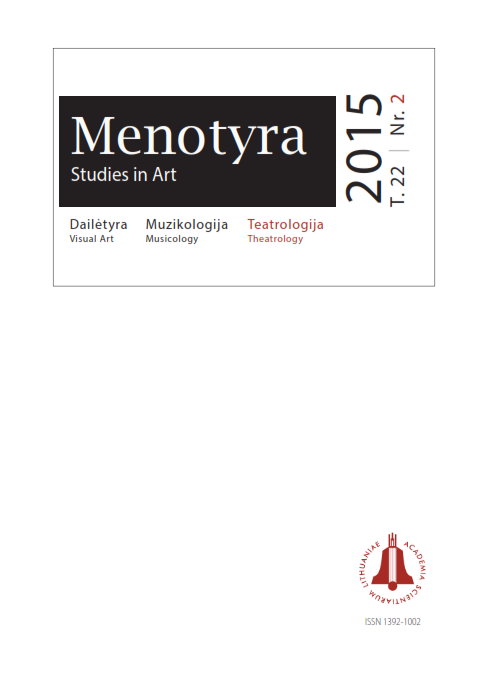Commedia dell’arte ir šiuolaikinis Lietuvos teatras
Commedia dell’arte and contemporary Lithuanian theatre
Author(s): Julija ŠabasevičiūtėSubject(s): Theatre, Dance, Performing Arts, Fine Arts / Performing Arts
Published by: Lietuvos mokslų akademijos leidykla
Keywords: commedia dell’arte; improvisation; mask; comedy; Goldoni; Gozzi; Marivaux; contemporary Lithuanian theatre
Summary/Abstract: Commedia dell’arte, a phenomenon of art born in the 16th century, is one of the most important foundations of Western theatre and an integral part of contemporary theatre. Despite the fact that commedia dell’arte ebbed in the 18th century (even in its birthplace - Italy and France - there is no consistent tradition), it greatly influenced the successive forms of theatre and was perpetuated in literature. The practitioners of theatre found it interesting because of the exceptional technique of performance and improvisation. Contemporary theatrologists refuse to unconditionally claim that commedia dell’arte still exists today in its entirety, but they tend to agree that there exists a partial commedia dell’arte, some of its distinctive features. The Lithuanian professional theatre is not related to this Italian theatre form, but Lithuanian directors occasionally take an interest in and try to understand commedia dell’arte and explain their view to the public. Such attempts are the easiest to identify in examples of literary, i. e. written commedia dell’arte, as in the productions of the plays of Carlo Goldoni, Carlo Gozzi or Pierre Carlet de Chamblain de Marivaux. Nonetheless, to grasp the concept of commedia dell’arte, other plays, which use the same techniques unconsciously without direct interest in commedia dell’arte, can be of help.
Journal: Menotyra
- Issue Year: 22/2015
- Issue No: 2
- Page Range: 139-151
- Page Count: 13
- Language: Lithuanian

